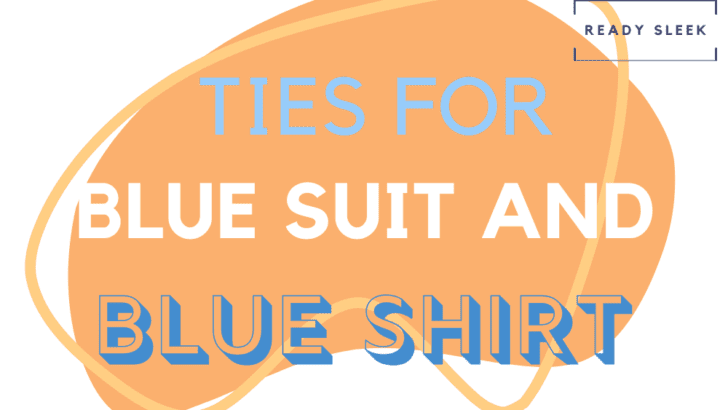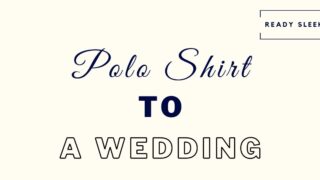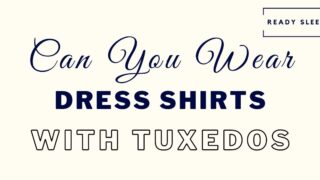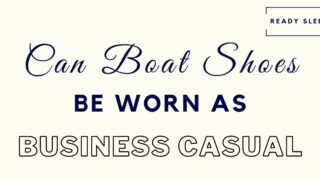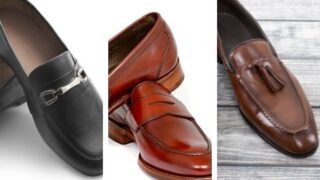You’ve got options. Ultimately, that’s the beauty of a monochromatic blue suit and blue shirt combo. But it’s no secret that some tie colors look better than others here.
So, here are some great tie colors you can wear with a blue suit and blue shirt very effectively:
- Black
- Red
- Green
- Pink
- Gold
- Purple
- Yellow
We’re about to go through each of those options in more detail, with pictures to help you choose the perfect one no matter what you may be dressing for.
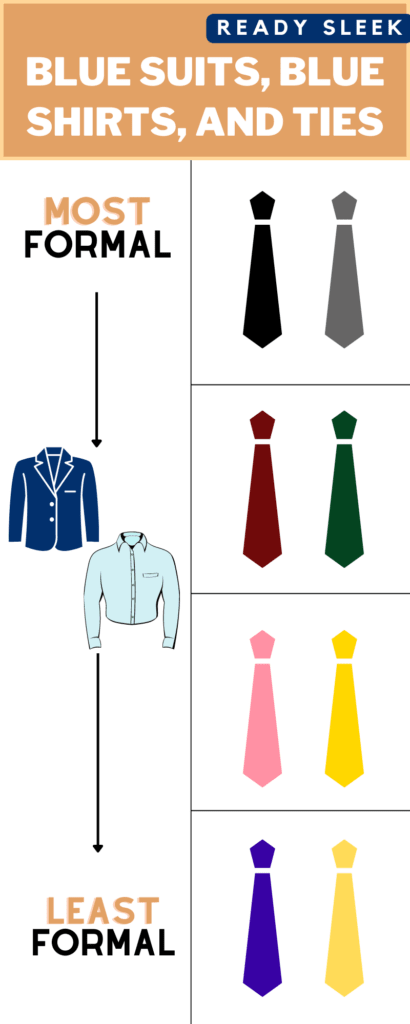
7 Tie Colors You Can Wear With A Blue Suit And Blue Shirt
I’ve indicated which dress codes each option would be best suited to, but you’ll notice how I’ve completely excluded business casual.
In business-casual settings, avoid suits and ties whenever possible. Consider a dress pants/khakis combination instead.
In addition, avoid the blue suit/blue shirt combo in truly formal settings – a white dress shirt would usually be best here instead.
This combination would be most suitable for business-professional settings (eg. corporate workplaces) or smart-casual settings.

Black Tie
A black tie can easily be worn with a blue suit and a blue shirt in business-professional or smart-casual settings. It’s arguably the most formal tie option you could go for.
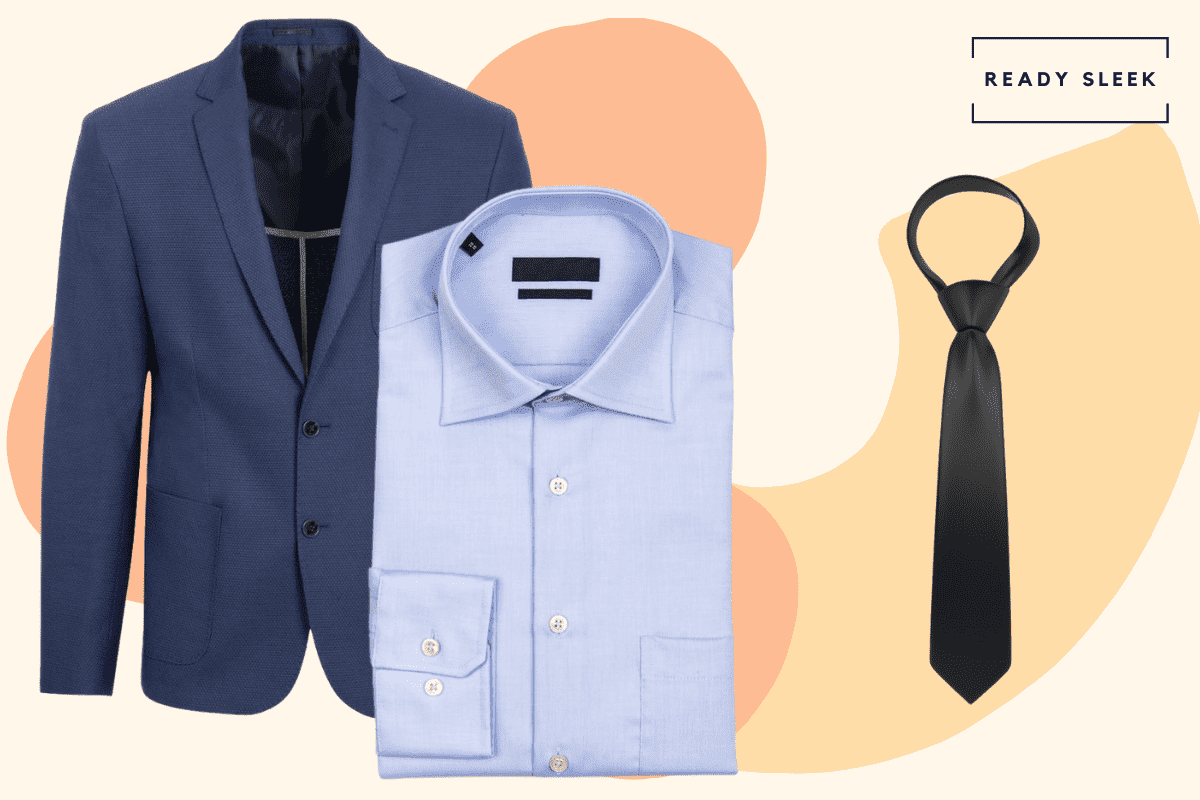
If you’re ever concerned about underdressing, go for a dark and neutral tie color such as black, charcoal, or navy.
Black ties work well here because it’s dark and striking enough to really pop out against the backdrop of the blue shirt.
In business-professional settings, go for a navy blue suit, a light blue shirt, and a black silk necktie.
Simple, sharp, and sophisticated.
In more casual settings, feel free to go for a more casual suit style in a lighter shade of blue. Consider more relaxed fabrics/weaves such as serge, flannel, or even linen.
In addition, consider a black knitted tie instead of the more formal silk one you’d wear in a more professional environment.
Red Tie
A red tie can be worn with a blue suit and a blue shirt with good effect. In business-professional settings, consider a dark red tie (eg. burgundy or crimson), with those in lighter shades of red (eg. scarlet) being more appropriate in smart-casual environments.
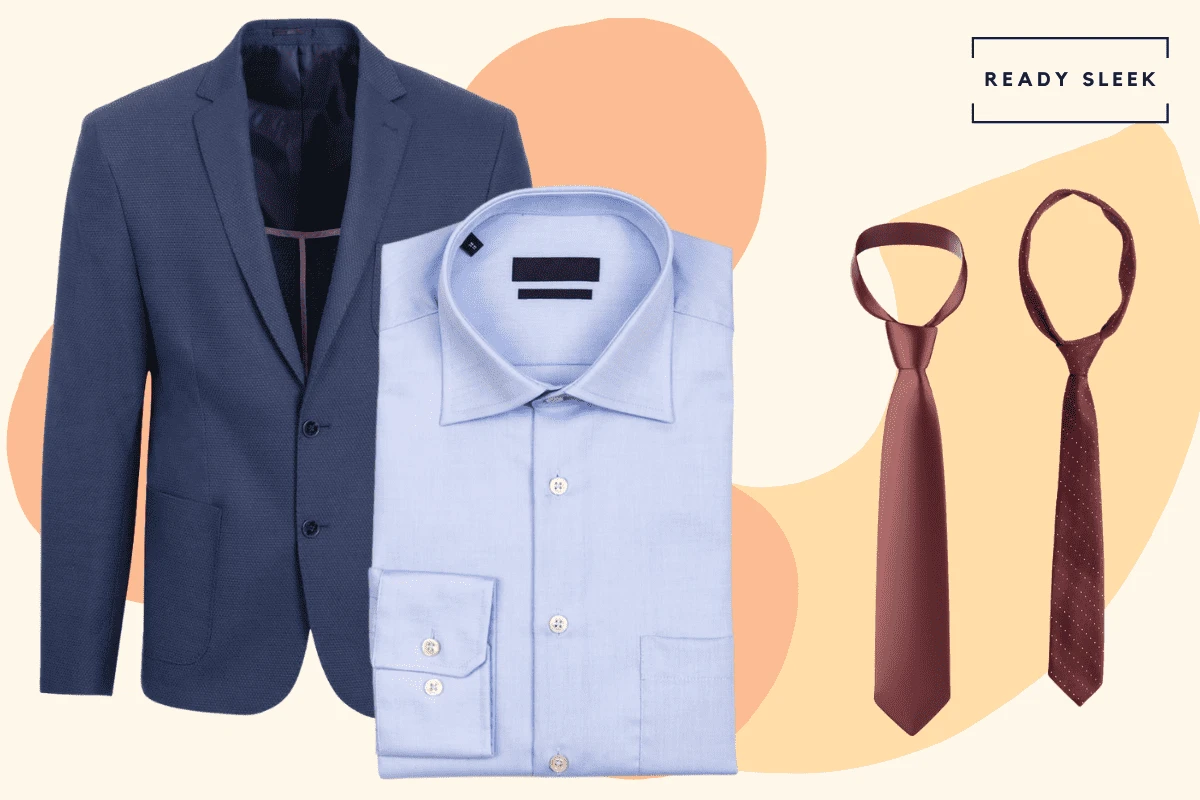
As you can see, the shade of the red tie plays a huge role in how dressy or not-so-dressy the suit and shirt combination looks overall.
But at the end of the day, blue and red will coordinate very well no matter what shades you’re working with.
The striking and “warm” undertones of the red tie will add a nice sense of contrast to the more relaxed and “cool” undertones of the blue suit and shirt.

Green Tie
A blue suit and blue shirt combination can be worn with green ties in a variety of settings. In business-professional workplaces, dark and muted shades of green such as forest, hunter, and sage work well. In more casual settings, consider lighter and more striking shades of green (eg. mint, lime).

Green ties have a calming and earthy tone to them, but the shade of green is essential to consider.
Unlike the previous example, here, we’re combining two “cool” colors – blue and green.
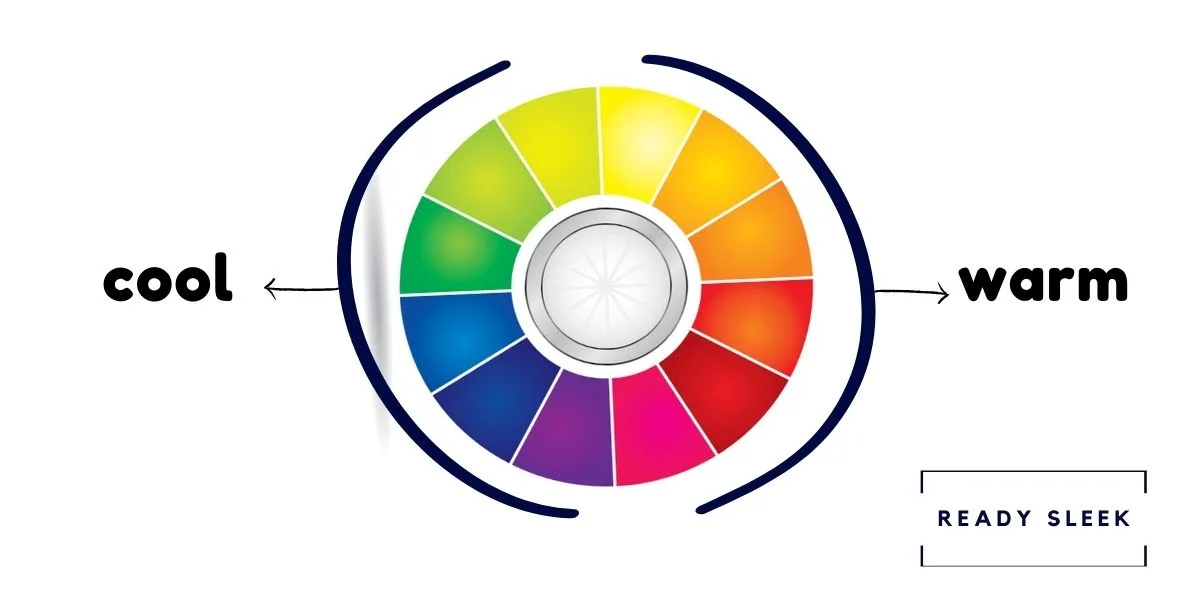
Combining two “cool” colors is very easy to do, unlike combining two “warm” colors which can often become a little too much.
Blue and green look great together, producing a laid-back and relaxed aesthetic.
Pink Tie
A pink tie can be worn with a blue suit and blue shirt in smart-casual settings. The “warmth” of the pink tie pops out against the “coolness” of the blue suit and shirt.
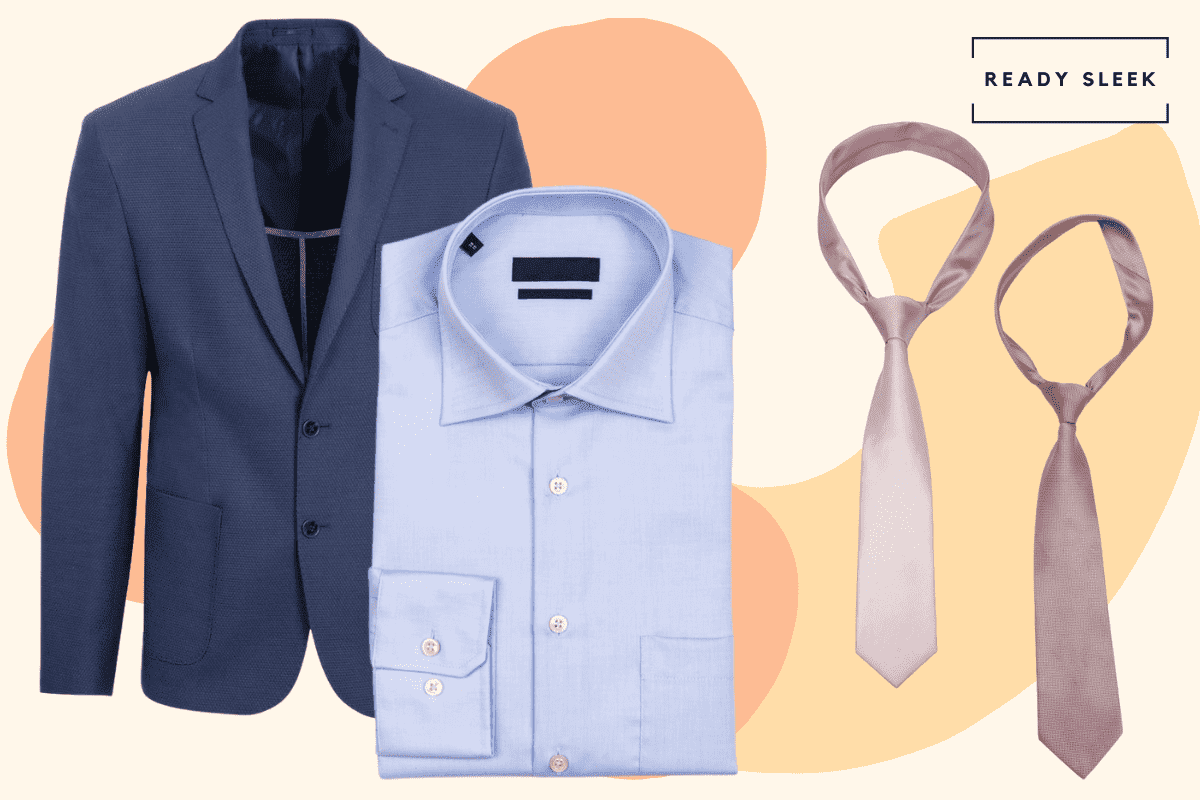
While it’s possible to wear pink ties in professional settings, when wearing a blue shirt, it generally wouldn’t be advised.
Overall, the combination would usually end up looking too casual, simply due to there being too much color.
Instead, consider a blue suit, blue shirt, and pink tie combination in smart-casual settings where there’s less of a risk of underdressing and more freedom to express yourself with color.
It could be a good option when attending a wedding as a guest. Pink ties have a more vibrant, fun, and celebratory look to them.
Darker and more muted shades of pink such as dusty pink or salmon pink are often easier to pull off than in-your-face shades such as hot pink.
Gold Tie
Gold ties can be worn with a blue suit and blue shirt combination in smart-casual settings where a bold tie color wouldn’t risk underdressing.
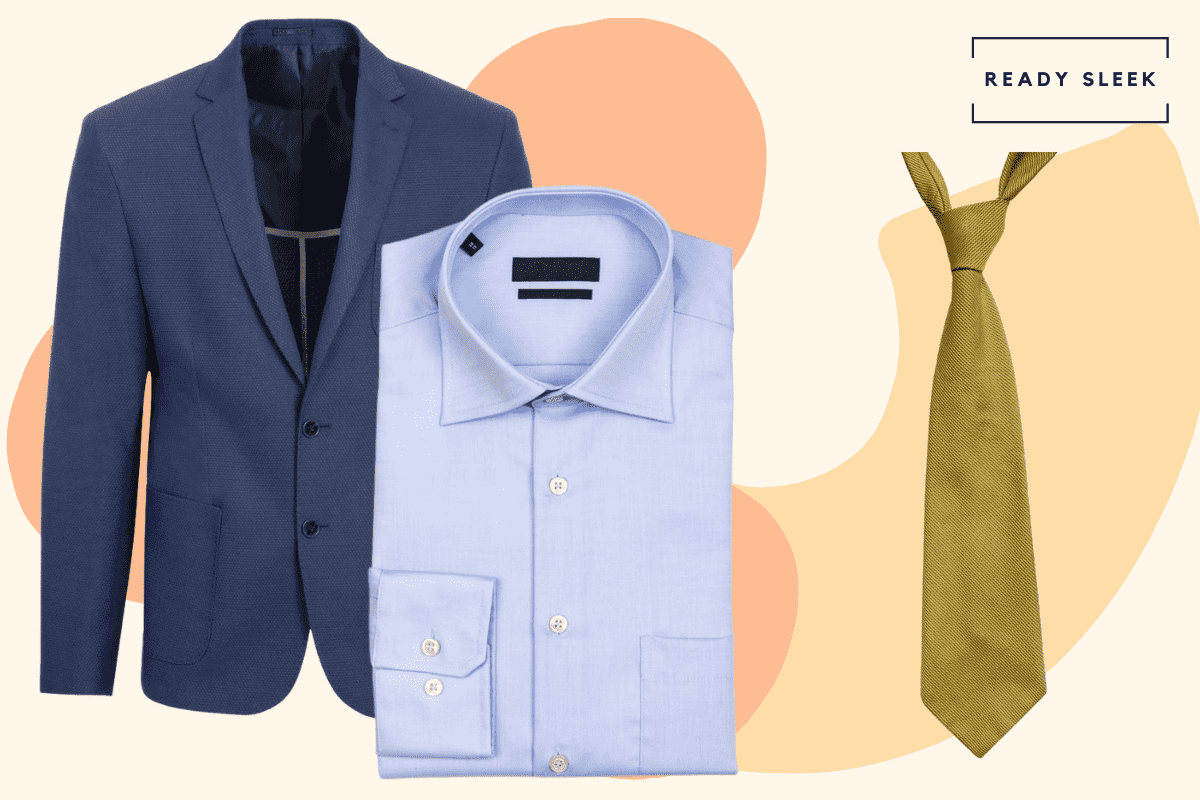
Gold could simply be thought of as a dark or medium shade of yellow with a metallic tint or sheen.
As you’d expect, a gold tie has a luxurious and expensive aesthetic to it.
When wearing a blue suit and a blue shirt, a gold tie really pops out for a couple of reasons.
One is that gold is clearly a “warm” color, unlike the “cool” blue suit and shirt pairing. Another is simply due to the sheen and metallic tint being eye-catching in itself.
Wearing a gold tie here would definitely look dressier than a yellow tie. Overall, the combination could be a reasonable option for a wedding guest.
At the end of the day, weddings do usually allow for little celebratory splashes of color.
But overall, gold ties should generally be worn with a blue suit and blue shirt in smart-casual settings where bold and eye-catching choices wouldn’t draw disapproving stares.
Purple Tie
A purple tie can be worn with a blue suit and blue shirt in smart-casual settings. Ties in darker shades such as mauve, plum, and blackberry purple will look dressier than lighter shades such as lilac.
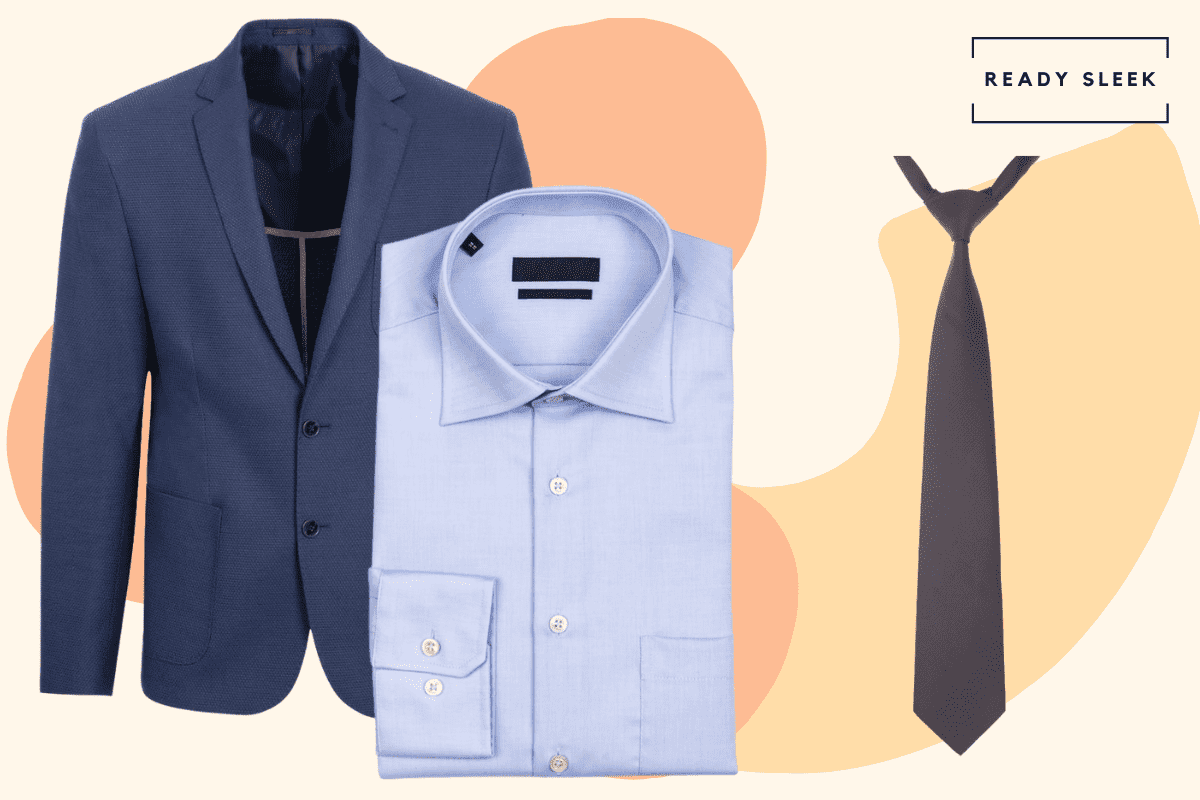
Here, you’ve once again got the benefit of combining two “cool” colors – blue and purple.
The colors will sync and coordinate effortlessly with each other, but overall, the combination does look quite casual.
More so than it would if you were wearing a white shirt instead of a blue one.
The combination works well in smart-casual settings and usually looks best when you wear a dark or medium blue suit, a light blue shirt, and a dark purple tie.
Yellow Tie
Yellow ties can be worn with a blue suit and blue shirt in smart-casual settings where there’s minimal risk of underdressing. To avoid the combination becoming too attention-grabbing, go for a tie in a dark and muted shade of yellow (eg. mustard).
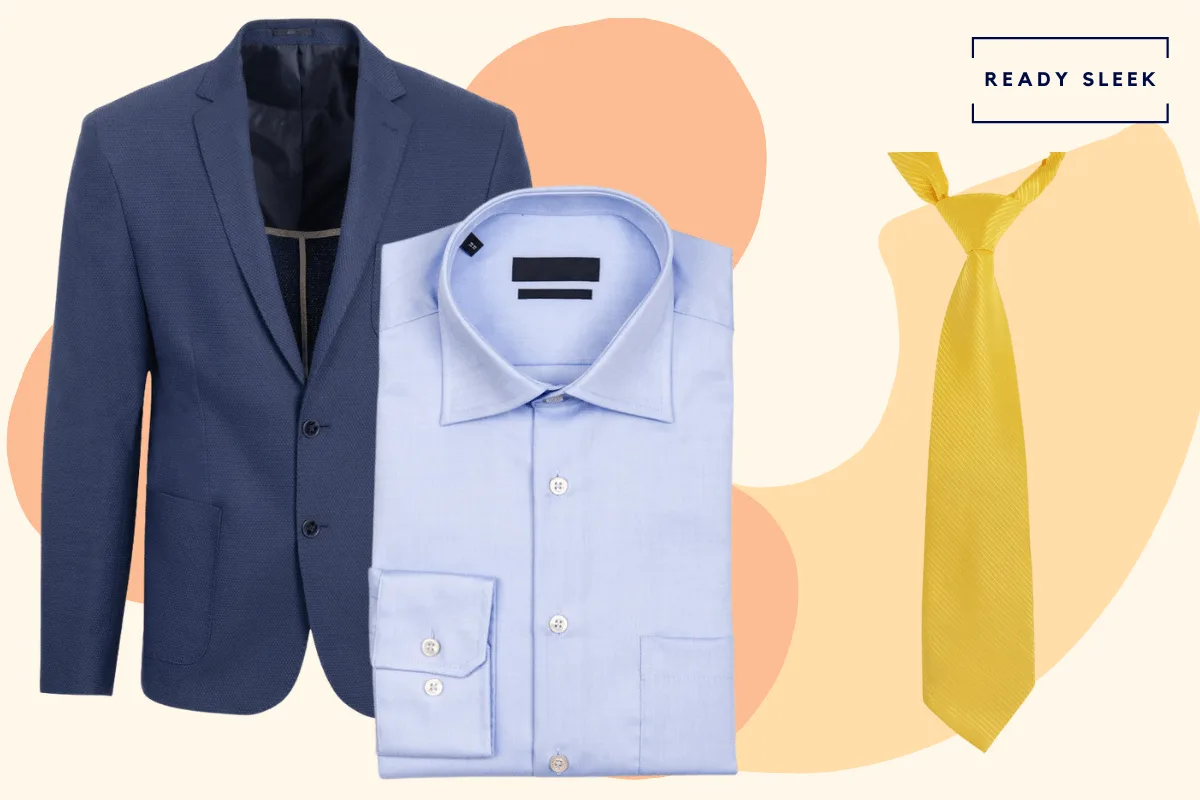
This is a pretty casual option. It can work well, but be sure to wear it in settings that are casual enough to allow for it.
Yellow is “warm”, striking, and bold. It’ll look even more so when worn over the “cool” blue suit and shirt combination.
The easiest way to make it look great would be to go for a light blue shirt and to wear a tie in a subtle and muted shade of yellow over it.
Frequently Asked Questions
Here are the answers to a couple of FAQs on this combination to really finish up in style.
Can You Wear A Blue Suit And A Blue Shirt With No Tie?
A blue suit and blue shirt can easily be worn without a tie in smart-casual settings where a necktie wouldn’t usually be necessary.
This look works best when the blue suit style is quite casual in itself.
It’ll usually be made from a more casual fabric or weave such as serge, flannel, hopsack, linen, tweed, herringbone, and so on.
These have more rough and rugged textures, unlike the sheen and wrinkle-resistant texture of worsted wool (often used in business suits).
So, fully embrace the casual aesthetic by choosing a more casual blue suit and blue shirt style and simply leaving one or two buttons undone.
Ditch the tie altogether.
What Tie Color Should You Wear With A Blue Suit And A Blue Shirt To An Interview?
When attending an interview, consider wearing a dark blue suit, a light blue shirt, and a tie in a dark and neutral color such as black or charcoal. In addition, consider whether a blue shirt would be appropriate in the first place, as a white shirt may ultimately be a safer option.
Dress the part when going for an interview. Don’t try too hard to impress, but make it clear you’re taking the experience seriously.
Ready Sleek founder. Obsessed with casual style and the minimalist approach to building a highly functional wardrobe. Also a fan of classic, vintage hairstyles.

